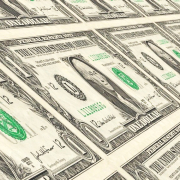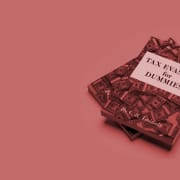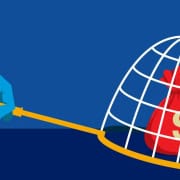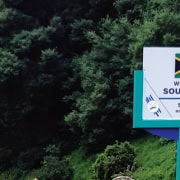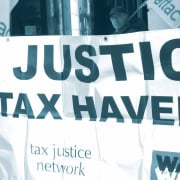|
Getting your Trinity Audio player ready...
|
By Janine Erasmus – CW Voices
“Nigeria and Afghanistan – possibly two of the most corrupt countries in the world.”
This politically naīve statement (as we shall see) was uttered by then British prime minister (PM) David Cameron ahead of an anti-corruption summit that took place there in May 2016.
But having covered and studied three editions of the Tax Justice Network’s biennial Financial Secrecy Index in the intervening years – an index which paints a different picture to that suggested by Cameron – and discerned the hypocrisy of the former PM’s statement, one wonders if his words still hold water. Who are the real corrupt countries in today’s globalised context – if such a thing can be qualified?
Are they the mostly developing countries which have been ravaged by the East and West, or are they the developed countries that aid in the ravaging by knowingly providing channels for illegal financial flows? Are they the countries whose officials, whether in the interest of greed or development, often bow to pressure from multinationals to allow them to operate, or are they the countries whose multinationals solicit bribes from officials in resource-rich countries in order to plunder?
Or are they both?
Our new two-part op-ed mini-series ponders this question.
Nigeria leads in African beneficial ownership transparency
While it is true that countries such as Nigeria are perceived to be highly corrupt – indeed, there is no denying that the country has struggled to control levels of corruption and still does, and in this it is not alone in the world – nowadays the West African nation is setting the pace on the continent in terms of important anti-corruption measures such as a central beneficial ownership register.
In fact, in May 2023 it became the first African country to adopt Open Ownership’s Beneficial Ownership Data Standard to collect beneficial ownership data, and has committed to making this information public. Open Ownership (OO) is an organisation that works for more transparent data on company ownership, helping countries to comply with international standards and meet the needs of various data users from the private and public sectors, as well as civil society.
Nigeria’s updated Persons with Significant Control Register uses the OO data standard to “gather high-quality structured data on the beneficial owners of Nigerian companies”, said OO. In other words, government agencies can access and use this information more efficiently. The data is also combined with other domestic datasets such as public procurement and extractive industry data, and is connected with beneficial ownership data from other countries.
In this, the country is leading the way and encouraging other African nations to follow. A report titled Beneficial Ownership Transparency in Africa in 2022 and released in mid-March 2023 by the Tax Justice Network (TJN) shows a slow but steady implementation of beneficial ownership transparency (BOT) regulations across the African continent.
As of the start of 2023, the report notes, 23 of 54 African countries have laws and regulations in place which require the real people – the beneficial owners – behind legal vehicles to disclose themselves to a government authority. Such transparency is an essential tool in the arsenal against illicit financial flows, which cost the continent billions each year in lost funds for development, and a vital component of strategies to combat tax abuse, money laundering, corruption, and the financing of terrorism.
EITI transparency
Furthermore, as a mineral-rich country, Nigeria is a member of the Extractives Industry Transparency Initiative (EITI) and has committed to BOT in its extractives sector. This is an important step in combating secrecy and improving governance in the sector.
The EITI has 24 member countries in Africa – of which South Africa is not one, but recent Corruption Watch (CW) research indicates that it is time for the country to commit to the EITI Standard, and play a role in raising levels of transparency and governance in the broader extractives sector across the continent.
“One of the things the EITI does well is to not just publish information, but publish it in a form as accessible as possible, supported by outreach and infographics and communications to make that information more accessible to a wide range of stakeholders who wanted to use it,” CW’s EITI report states.
The 24 African members make up almost half of the global total, says EITI. “Some of the first governments to join EITI and publish data in line with the EITI Standard were African.”
EITI’s primary purpose is “to promote understanding of natural resource management, strengthen public and corporate governance, and provide the data to inform greater transparency and accountability in the extractives sector.”
Anti-corruption progress across the continent
A year ago Transparency International (TI) published an assessment of Africa’s shared anti-corruption roadmap under its Towards the Enforcement of Africa’s Commitments against Corruption (TEA-CAC) project.
Specific examples cited included Corruption Watch’s work on how to evaluate and strengthen anti-corruption institutions. In Côte d’Ivoire, meanwhile, the Social Justice organisation focused on closing the gap between civil society and government, and is making great progress, says TI. In Rwanda, the local TI chapter focused on encouraging whistleblowers, working to ensure systems are in place to protect whistle-blowers, and using the media to raise awareness. Tunisia’s I Watch called for the transparent declaration of assets of members of the new Cabinet – success came the next day, with the prime minister and other newly appointed ministers filing declarations of interests.
“While each country comes with its own unique set of challenges in tackling corruption, all Transparency International chapters under the TEA-CAC project recorded significant successes with their advocacy work,” said TI.
African anti-corruption research network launched
In May 2023 the African Union (AU) launched the African Anti-Corruption Research Network (AACRN). This project falls under the auspices of the AU, and is supported by research institutions and professional associations. The steering committee comprises the African Union Advisory Board on Corruption, South Africa’s Stellenbosch University, Kenya’s Kenyatta University, the Association of African Anti-Corruption Authorities, the Cameroon Anti-Corruption Commission, and the African Association for Public Administration and Management, as well as independent researchers.
The announcement came after the conclusion of a pan-African workshop on the formation of the AACRN, held in the second week of May in Arusha, Tanzania. The AACRN will provide science-based data to AU states which will inform their anti-corruption initiatives. Delegates discussed topics such as the importance of research in the fight against corruption, the connection between research and public policy and policy making, and the effective development of an African research agenda.
The AACRN will also carry out tasks such as mapping the body of research available on the anti-corruption landscape, assess the efficiency and effectiveness of national anti-corruption bodies, and enhance the accessibility of anti-corruption information, educational resources, and research outputs to policy-makers, scholars, the civil society organisations, and the media – this includes information of training for government officials.
Various ways to measure corruption
While we’re on this topic, we must always keep in mind that there is no absolute way to measure corruption. Because of its very nature – carried out clandestinely – corruption is difficult to quantify. Monitoring perceived levels of corruption, as the annual Transparency International Corruption Perceptions Index does, is not the only measure of levels of corruption nor is it the most accurate.
Other corruption-related indices, including the Global Corruption Risk Index, the Global Corruption Barometer, the World Bank’s Country Policy and Institutional Assessment rating of transparency, accountability, and corruption in the public sector, and more, use various criteria and indicators to gather their data and compile their results.
Measuring corruption, therefore, happens under diverse themes or focus areas, and bringing them all together to give a wider overview of the situation would be almost impossible because of the variation in methodologies. For the purposes of this article, it is not necessary to go deeper into the results of these various instruments, because they are all widely publicised.
However, there are other ways of considering corruption and its impact and what may not be as widely shared, however, are the next set of indices. In part two of this mini-series we examine the Tax Justice Network’s Financial Secrecy Index and Corporate Tax Haven Index, and The State of Tax Justice report.
These highlight the other side of the coin of corruption – the countries which knowingly enable secrecy, illicit movement of funds, tax evasion, and opacity in corporate ownership structures.

